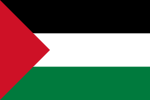
Back حركة 8 شباط 1963 Arabic রমজান বিপ্লব Bengali/Bangla شۆڕشی ڕەمەزان CKB Revolución del Ramadán Spanish انقلاب رمضان Persian Coup d'État de février 1963 en Irak French הפיכת 8 בפברואר 1963 (עיראק) HE Ռամադանի հեղափոխություն Armenian Revolusi Ramadan ID ラマダーン革命 Japanese
| Ramadan Revolution | |||||||
|---|---|---|---|---|---|---|---|
| Part of the Cold War and the Arab Cold War | |||||||
 A sign with the image of Qasim taken down during the coup | |||||||
| |||||||
| Belligerents | |||||||
|
|
| ||||||
| Commanders and leaders | |||||||
|
|
| ||||||
| Casualties and losses | |||||||
| 100 killed[4] | 80 killed[5] | ||||||
| 1,500–5,000 alleged civilian supporters of Qasim and/or the Iraqi Communist Party killed during a three day "house-to-house search"[4][6] | |||||||

| Part of a series on |
| Ba'athism |
|---|
 |
The Ramadan Revolution, also referred to as the 8 February Revolution and the February 1963 coup d'état in Iraq, was a military coup by the Iraqi branch of the Ba'ath Party which overthrew the Prime Minister of Iraq, Abdul-Karim Qasim in 1963. It took place between 8 and 10 February 1963. Qasim's former deputy, Abdul Salam Arif, who was not a Ba'athist, was given the largely ceremonial title of President, while prominent Ba'athist general Ahmed Hassan al-Bakr was named Prime Minister. The most powerful leader of the new government was the secretary general of the Iraqi Ba'ath Party, Ali Salih al-Sa'di, who controlled the National Guard militia and organized a massacre of hundreds—if not thousands—of suspected communists and other dissidents following the coup.[7]
The government lasted approximately nine months, until Arif disarmed the National Guard in the November 1963 Iraqi coup d'état, which was followed by a purge of Ba'ath Party members.
- ^ Wolfe-Hunnicutt, Brandon (2021). The Paranoid Style in American Diplomacy: Oil and Arab Nationalism in Iraq. Stanford University Press. p. 108. ISBN 978-1-5036-1382-9.
- ^ Matthews, Weldon C. (9 November 2011). "The Kennedy Administration, Counterinsurgency, and Iraq's First Ba'thist Regime". International Journal of Middle East Studies. 43 (4): 635–653. doi:10.1017/S0020743811000882. ISSN 0020-7438. S2CID 159490612.
- ^ Wolfe-Hunnicutt, Brandon (20 July 2018). "Essential Readings: The United States and Iraq before Saddam Hussein's Rule". Jadaliyya.
- ^ a b Makiya, Kanan (1998). Republic of Fear: The Politics of Modern Iraq, Updated Edition. University of California Press. p. 29. ISBN 9780520921245.
- ^ Cite error: The named reference
Proxy Warriorswas invoked but never defined (see the help page). - ^ Gibson 2015, p. 59.
- ^ Gibson 2015, pp. 59–60, 77.